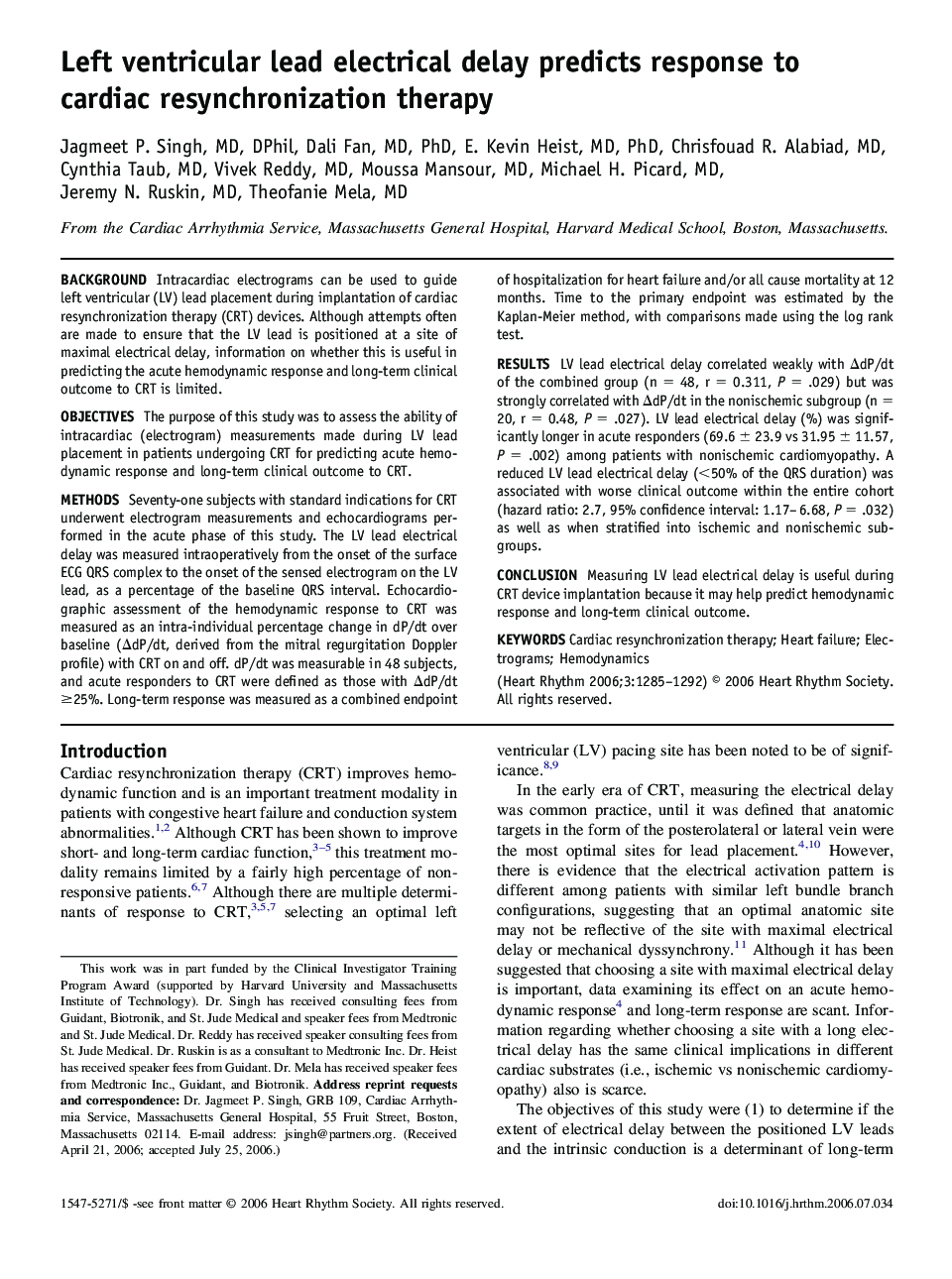| کد مقاله | کد نشریه | سال انتشار | مقاله انگلیسی | نسخه تمام متن |
|---|---|---|---|---|
| 2925547 | 1175954 | 2006 | 8 صفحه PDF | دانلود رایگان |

BackgroundIntracardiac electrograms can be used to guide left ventricular (LV) lead placement during implantation of cardiac resynchronization therapy (CRT) devices. Although attempts often are made to ensure that the LV lead is positioned at a site of maximal electrical delay, information on whether this is useful in predicting the acute hemodynamic response and long-term clinical outcome to CRT is limited.ObjectivesThe purpose of this study was to assess the ability of intracardiac (electrogram) measurements made during LV lead placement in patients undergoing CRT for predicting acute hemodynamic response and long-term clinical outcome to CRT.MethodsSeventy-one subjects with standard indications for CRT underwent electrogram measurements and echocardiograms performed in the acute phase of this study. The LV lead electrical delay was measured intraoperatively from the onset of the surface ECG QRS complex to the onset of the sensed electrogram on the LV lead, as a percentage of the baseline QRS interval. Echocardiographic assessment of the hemodynamic response to CRT was measured as an intra-individual percentage change in dP/dt over baseline (ΔdP/dt, derived from the mitral regurgitation Doppler profile) with CRT on and off. dP/dt was measurable in 48 subjects, and acute responders to CRT were defined as those with ΔdP/dt ≥25%. Long-term response was measured as a combined endpoint of hospitalization for heart failure and/or all cause mortality at 12 months. Time to the primary endpoint was estimated by the Kaplan-Meier method, with comparisons made using the log rank test.ResultsLV lead electrical delay correlated weakly with ΔdP/dt of the combined group (n = 48, r = 0.311, P = .029) but was strongly correlated with ΔdP/dt in the nonischemic subgroup (n = 20, r = 0.48, P = .027). LV lead electrical delay (%) was significantly longer in acute responders (69.6 ± 23.9 vs 31.95 ± 11.57, P = .002) among patients with nonischemic cardiomyopathy. A reduced LV lead electrical delay (<50% of the QRS duration) was associated with worse clinical outcome within the entire cohort (hazard ratio: 2.7, 95% confidence interval: 1.17–6.68, P = .032) as well as when stratified into ischemic and nonischemic subgroups.ConclusionMeasuring LV lead electrical delay is useful during CRT device implantation because it may help predict hemodynamic response and long-term clinical outcome.
Journal: Heart Rhythm - Volume 3, Issue 11, November 2006, Pages 1285–1292